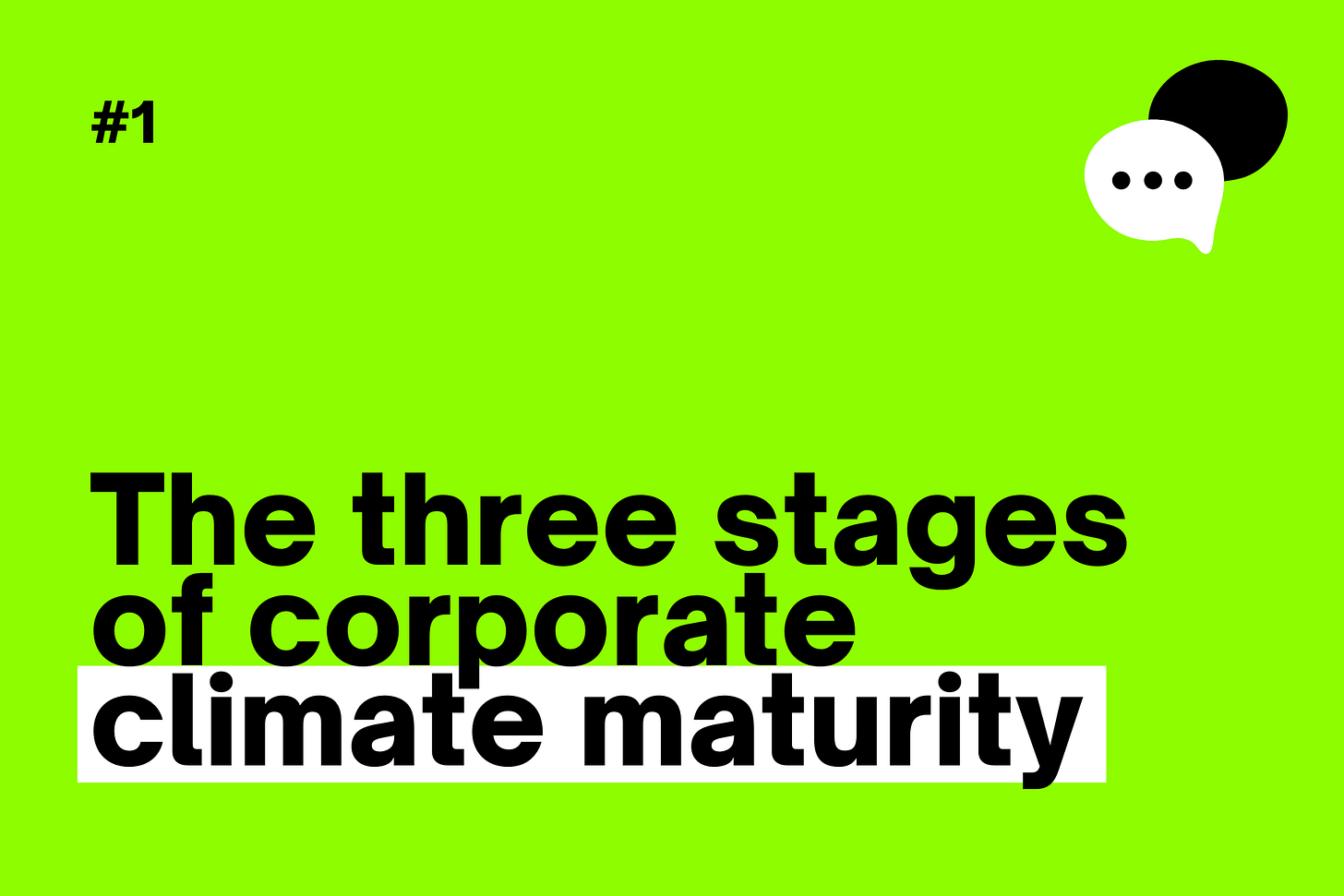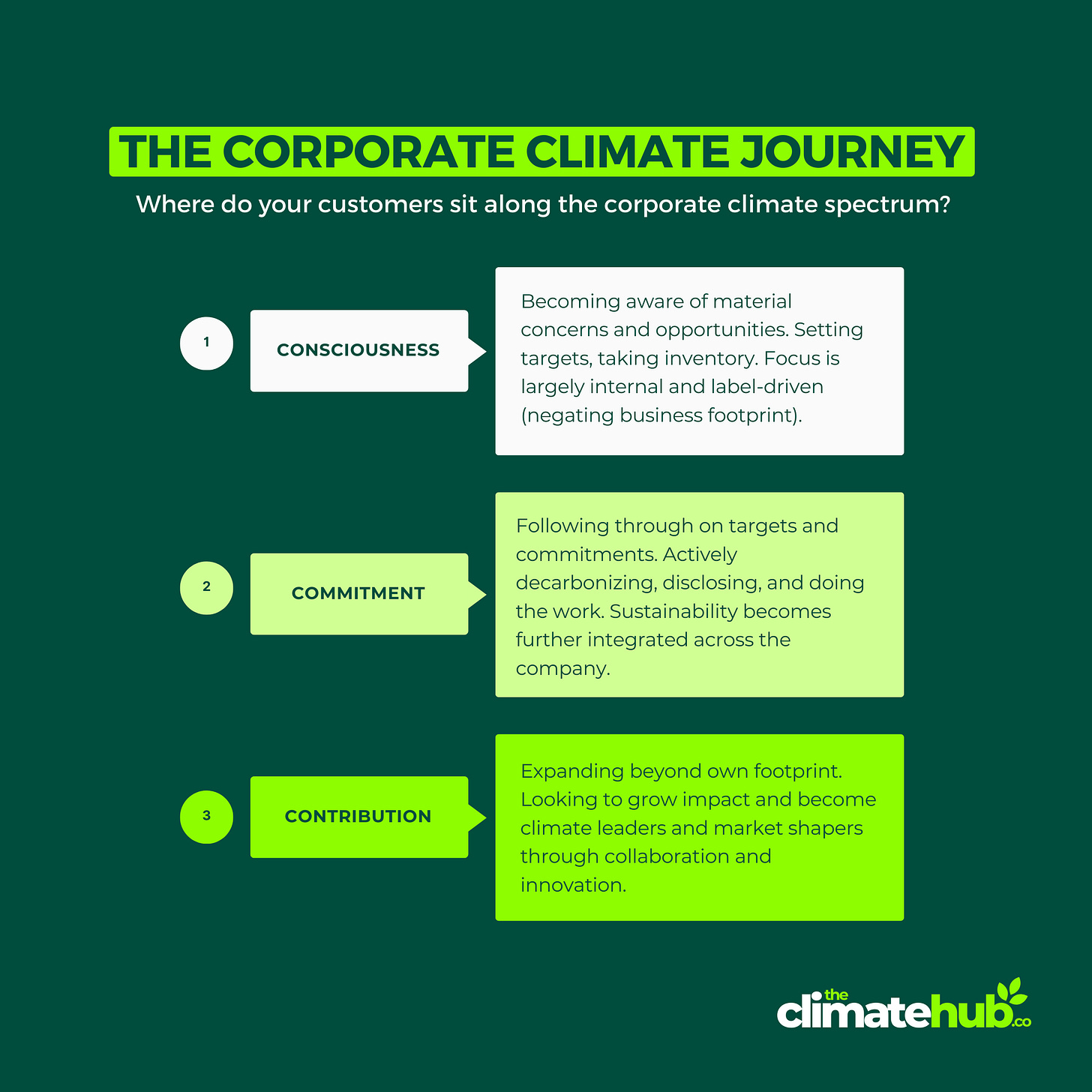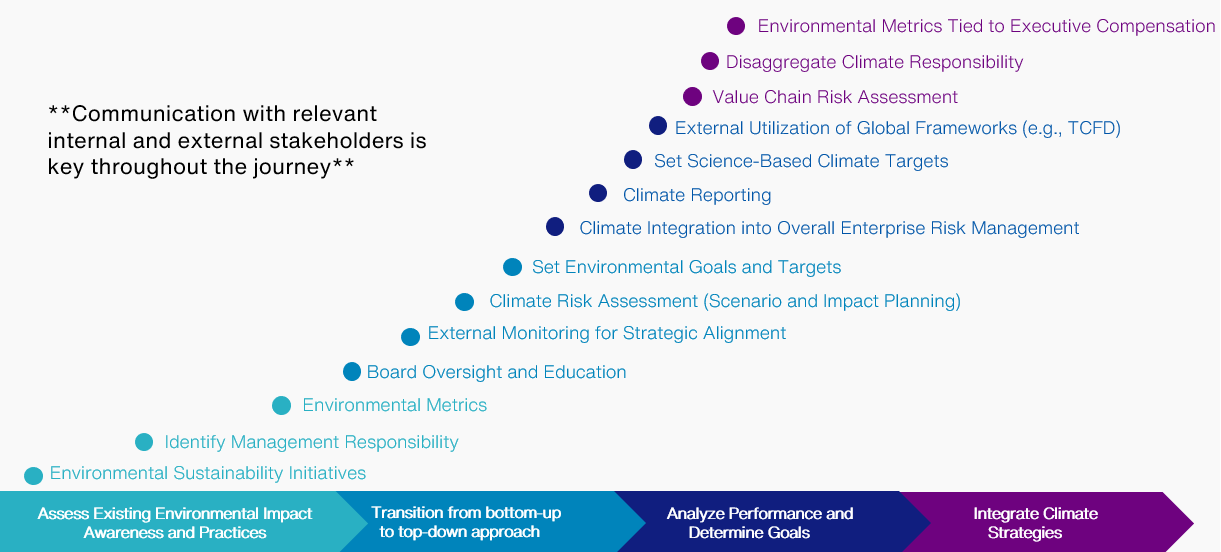The three stages of corporate climate maturity
What makes for a 'climate-mature' corporation, anyway?
Hello friends,
What makes for a ‘climate-mature’ corporation, anyway?
Here’s what we’re seeing: climate tech brands are trying to target companies at all ends of the climate maturity spectrum — and failing. While most marketers will know which kind of customers they’re targeting, it can be helpful to think through in detail which parts of a climate strategy your audience does (or doesn’t) have, and what pains they’re dealing with daily.
Shall we dive in?
Breaking down the 3 stages of corporate climate maturity
The products you sell are likely suited to a particular stage of the corporate climate journey. Are you speaking to small companies just getting started or to Fortune 500s who already have significant infrastructure in place?
What will resonate with a CSO in the ‘contribution’ stage who leads a team of 12 as a sophisticated corporate climate leader is unlikely to resonate with a solo ‘ESG’ professional tasked with crafting a sustainability plan from scratch.
Let’s paint a picture:
Stage 1: Consciousness
These companies are finding their feet. They’re aware of the problem but are not yet fully equipped to deal with it.
They typically:
Have one or fewer dedicated sustainability or climate employees
Don’t have or are just beginning to take inventory of their baseline emissions
Don’t have or are just beginning to discuss climate targets
Climate responsibility is largely confined to the (typically solo) sustainability person, rather than being fully integrated into C-suite, board, and across departments
No climate reporting or disclosure in place
Stage 2: Commitment
These companies are finding their groove. They’ve set targets and are now doing the work of decarbonizing, educating, incentivizing, and disclosing.
They:
Have a small sustainability team that is well-connected throughout the organization
Have backing from C-suite and board members, with a two-way flow of information and accountability
Have an up-to-date emissions inventory
Disclose climate data in an annual sustainability report, though likely do not meet all recommendations or requirements of the frameworks or standards they are reporting to — there is still room for improvement
Are somewhat, though not fully, prepared to meet new/upcoming regulatory requirements
Stage 3: Contribution
These companies are climate leaders in their industries and typically have a reputation for being at the forefront of climate action. Often, they’re involved in industry-wide sustainability collaborations and initiatives.
They:
Have a large, multi-faceted sustainability team that covers wide ground and is embedded into virtually every department
Have significant top-down support from board members and C-suite
Compensation is linked to climate performance, and goes beyond just executive pay
Disclose detailed climate data and target progress in regular sustainability reports, as well as other consumer and stakeholder-focused communications at regular intervals
Share insights into their sustainability strategy and hold strong philosophies on certain strategies or initiatives
Aon’s climate risk maturity model captures the steps involved in the corporate climate journey.
The takeaway?
Much of what makes a ‘climate-mature’ organization happens in the operations rather than in the public target-setting. It’s the boring, behind-the-scenes work that moves a company forward on the climate maturity spectrum. To set audacious climate goals is one thing; to achieve them is quite another.
And that means…
This is a good thing, particularly for those selling software solutions such as carbon accounting and reporting products. It’s the unsexy — but deeply complicated — part of the job that sustainability professionals will need the most help with in the coming years.
The challenge ahead:
The difficulty lies in addressing the daily pains associated with the operations struggles your customers grapple with in your messaging. How you talk about jobs-to-be-done should look different based on which stage you’re targeting.
The challenge for marketers will be selling unsexy solutions in an attractive way — yet that has been an ever-present challenge in the B2B world, and innovative marketers will always find a way.
Educational resources
Dare we say that those drawn to climate solutions will also be drawn to this mind-blowing and ultimately optimistic book about what the future of humanity — hundreds, millions, and even billions of years into the future — could look like. You certainly won’t think of the future in the same way again.
Challenge the way you think about marketing with this collection of evidence-based essays from some of the most respected practitioners in the industry. You’ll find strong POVs and a ton of insightful information — no matter your niche.







